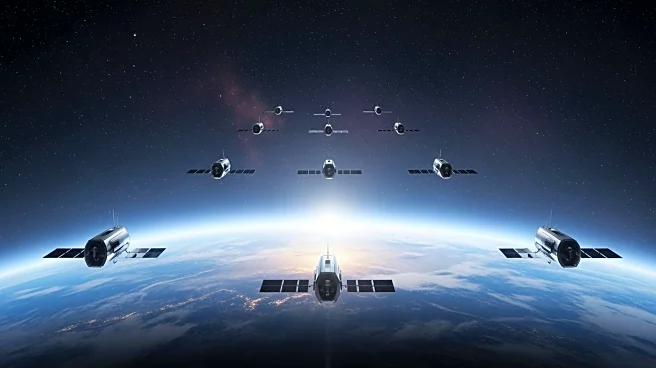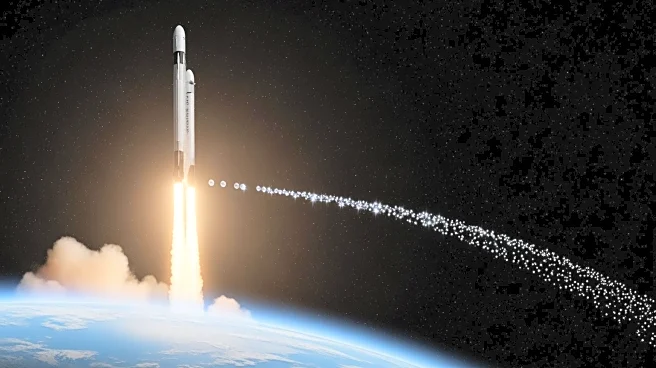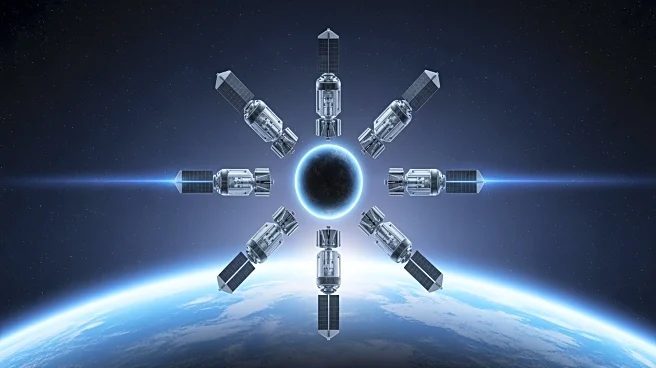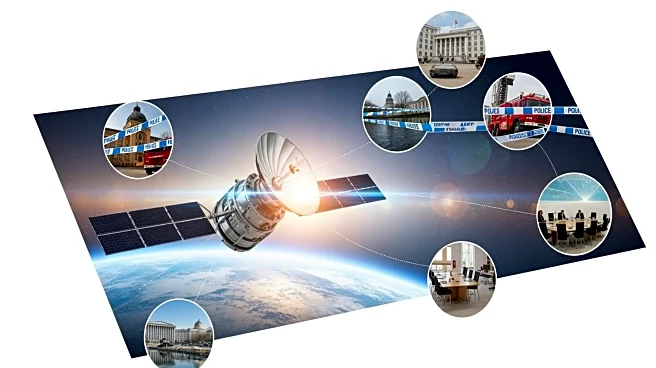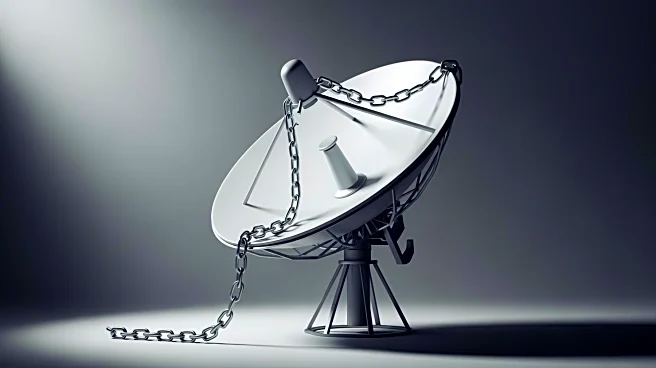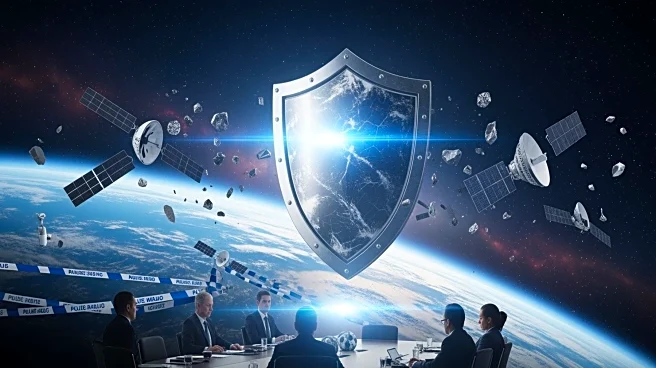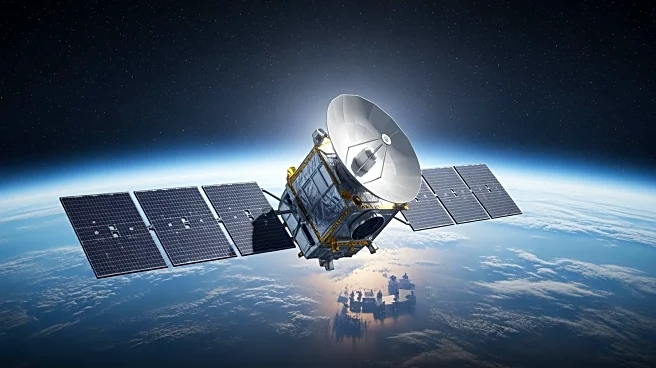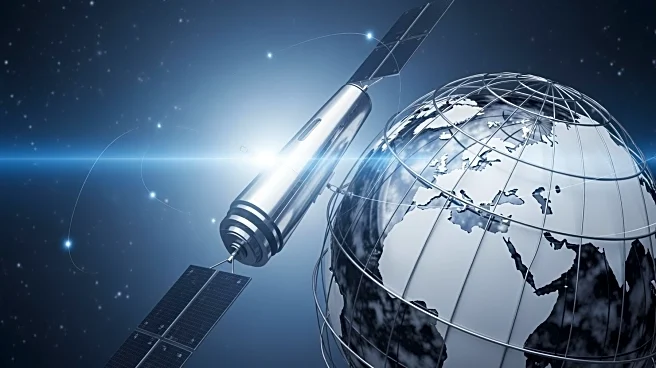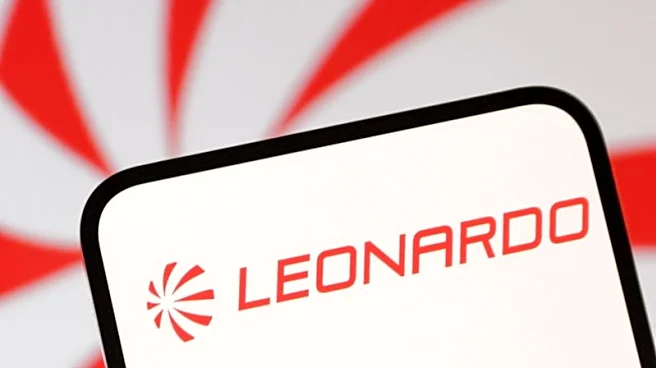What's Happening?
SpaceX, led by Elon Musk, has launched its 10,000th Starlink satellite, marking a significant milestone in its mission to provide global satellite internet coverage. The Starlink program now accounts for
two-thirds of all active satellites orbiting Earth. This rapid expansion has positioned SpaceX as a dominant force in the space launch industry, with the company on track to oversee 90% of the planet's payload mass into space by 2025. However, this concentration of power raises regulatory concerns about monopoly and competition, as well as environmental issues related to orbital debris and the risk of collisions, known as the Kessler Syndrome.
Why It's Important?
The expansion of SpaceX's Starlink network has significant implications for global internet connectivity, potentially providing high-speed internet access to remote and underserved areas. However, the rapid increase in the number of satellites also poses challenges for space governance and environmental sustainability. The potential for increased space congestion and the risk of collisions necessitate stringent regulatory measures to manage and mitigate space debris. This situation highlights the need for international cooperation and regulation to ensure the sustainable use of space resources.
